Instruction
Golf Instruction’s Great Imbalance
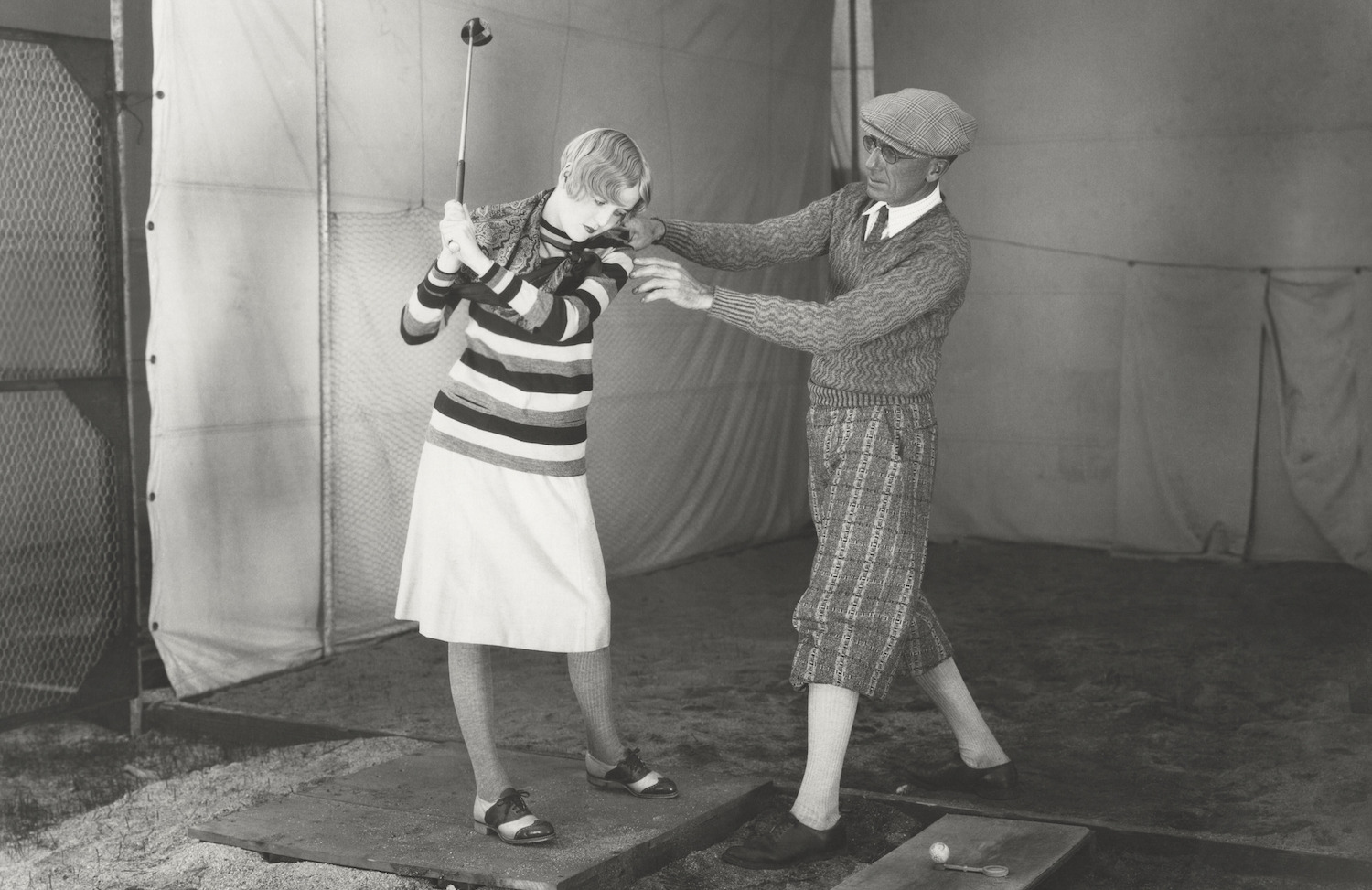
Golf instruction suffers today, as it has from perhaps its beginnings, from a fundamental imbalance which has hindered its potential effectiveness — too much emphasis on form, and not nearly enough on function. To highlight the sentiment, let’s draw an analogy between striking a golf ball and another task, which most would consider fairly uncomplicated.
Let’s call this fictional task “hammering.” Let me explain quickly how it works. We’ll be using a long-handled hammer to drive a spike into the trunk of a tree. The head of the spike will be roughly a foot above the ground, and already inserted into the trunk in some pre-specified direction. The object of our “game of hammering” is to drive the spike into the tree without bending the spike.
For now, let’s simplify the game further by saying that it hardly matters how FAR you drive the spike in, only your efficiency in doing so. A hammer strike with 100 percent efficiency will see three specific conditions met:
- The head of the hammer should be delivered accurately to the head of the spike (you might call this hitting the nail on the head).
- The direction that the hammer head is travelling at the moment of the strike should be in the same direction that the spike is pointing.
- The face of the hammer head should arrive flush or square to the direction that the hammer head is traveling.
Any deficiencies in one or more of these three conditions will result in more bending and less driving-in of the spike. So the RESULT we are after is the spike being driven in straight, and the ACTION that achieves that result is described by the three specific conditions of the strike. Fairly simple, right?
Not coincidentally, for ball-striking, the same three user-controlled strike conditions are the factors that create your ball flight, besides speed. And your ball flight creates your results, which in turn, creates your scores. Yet in a lesson for the beginning golfer, how often do you think it is explained that the sole purpose for the swing is to achieve just three conditions at the strike point, plus speed; or what those conditions should specifically be; or how to determine them on your own?
All too often, I find the form of the golf swing — the position and movements of the body, or biomechanics — are over-emphasized at the expense of the function of the swing. Ask yourself, given the task of hammering as described, do you feel that the average person would feel like they would have a decent chance of achieving good results equipped only with the intention to create the three strike conditions described, with no formal instruction on how to achieve those conditions? Do you think that person would feel intimidated to even try? So then why is it that although the criteria for the two tasks, hammering and ball-striking, are virtually identical, one task seems fairly straight-forward and achievable for persons of average physical ability, while the other (golf) is generally perceived as difficult to learn?
Now let’s say a new “hammer player” makes some strikes that reveal a noticeable bend in the stake. To the expert observer, that player’s next question might likely be, “What did I do wrong?” Ask yourself, if the expert answer/analysis were a report of the actual strike conditions against the known ideal, would that seem to be lacking? Would it be enough, on its own, for you to feel better-prepared for future strikes, equipped with a new/different intention(s), based on the findings?
In golf, the question, “What did I do wrong?” is asked all the time to teachers and friends alike. Very rarely is the answer a factual report of the strike conditions such as “You struck it on the heel,” or “Your club face was open.” Rather, the usual answers belong to an infinite number of unverifiable, subjective opinions relating to biomechanics. Ask your buddy what you did wrong after a particularly poor result, and the response is likely to be something like, “You picked up your head.” This approach seems like a clear case of putting the cart before the horse.
Let me share a couple of quotes on this subject from two of the greatest golfers of all time.
- “The only reason we bother with form and the correct swing is to find the best way of consistently bringing about the proper set of conditions at impact.” — Bobby Jones
- “Whatever any golfer does with a golf club should have only one purpose: to produce correct impact of club on ball.” — Jack Nicklaus
Now there are probably plenty of people reading this who are thinking that the strike conditions required in golf are obvious, but the real secret is HOW to consistently achieve them. But in order to improve one’s ball-striking, it would be wise to first make an accurate assessment of the present strike conditions, for any given stroke, and on average. In my experience, very few players, including good ones, possess the level of skill required to determine this on their own without falling into common traps. And most aren’t even trying, skipping this critical step entirely and moving right on to the biomechanical self-analysis.
Case in point: when a slicer produces a ball flight that starts fairly on-target and curves well to the right, why is the self-correction almost always to strike in a MORE leftward direction when the ball flight indicates a strike direction which is ALREADY leftward of ideal? Or what of the player who commonly intends to strike upwardly a ball lying on the ground? Could you imagine intending to hammer the spike upward into the tree if it were clearly pitched downward? A golfer doing this is not even clear on the required direction of the strike!
Very often, struggling players will swear that they know “what they’re doing wrong.” Yet almost never does the self-analysis relate to the actual strike. Apparently, this has been going on for some time. More from Nicklaus’ “Golf My Way,” published in 1974:
“I got into a discussion with a pro-am partner about his slice … He’d tried just about every method or gimmick ever invented. But what he’d obviously failed to comprehend were the simple, basic mechanics of impact-what causes the ball to fly a certain way. He was forever changing his swing without really considering what he wanted it to achieve for him at impact.”
As a player, your ball striking is driven by your intent or intentions. And these are all that an instructor ultimately passes on to a student. There are mainly three types of intentions a player can have. The first is internal or biomechanical. This involves the intention to do something specific with part(s) of the body. This is all that most golfers seem to think golf instruction is or can be. They’ve learned this by the historical methods of golf instructors, which in turn, have influenced “what my friend said.” The second is what you might call an abstract intention. An example would be the intention to swing at a specific tempo. The third is an external intention. This involves physical objects outside the body, like the club and ball. An example would be the intention to push the club head downward through the ball.
As you may have guessed by now, my favorite intentions for my students and for my own striking are usually external. Recent research testing on athletic cuing has also found that external intentions easily outperform internal types. And this is why I feel that it is a mistake to present a biomechanical analysis before determining what intention(s) will be best to improve ball-striking. Remember, most people only have room in their conscious mind for one or two intentions. So if it is ultimately determined that the best intention(s) for improvement are not internal, then introducing a biomechanical analysis will only serve to confuse and constitutes too much information.
It’s usually at this point where skeptics might come back at me with, “So you’re saying that it doesn’t matter what you do with your body?” Hardly. EVERYTHING matters. What I do for my students is to teach them to strike the ball better, more efficiently. I evaluate ball-striking from strike conditions, then instruct what I feel is the best intention — sometimes more than one — to improve specific strike conditions, and thus the strike as a whole and on average. Your consistency can simply be summed up as your average strike conditions for ALL strokes played.
Sometimes my instructed intention(s) is purely biomechanical, and the video camera and V1 software become important tools. But most of my students are regular people who don’t have the time or desire to embark on a major swing change. They just want to hit the ball better. I find that these folks, like just about all golfers, have wandered down the wrong path in their progress to varying extents, drawing the wrong conclusions about their own performance, stemming from a lack of knowledge.
“Knowledge of the game, not talent, is the equalizer that eludes the many who strive for excellence.” — Moe Norman
The comment of one of my recent new students sums-up my approach perfectly. He said, “I can’t believe how much better I’m hitting the ball and you haven’t tried to change my swing!” But of course, his swing DID change. Only he wasn’t aware of it because his only intention, per my instruction, was to strike the ball in a specific, new way.
The following is from Ernest Jones’ instruction classic, “Swing the Clubhead:”
“Ernest Jones had happened upon the then-little-understood fact that the human brain need only experience a persons’ desire to perform a task. On its own the brain devises a means to create the muscular action to achieve the task. The individual is only aware of ‘what’ they want to do. The brain’s action in deciding ‘how’ it will accomplish the task is completely unconscious.”
But you see, very rarely is it enough to simply have the intention to achieve a final result, such as to hit it on the green. WHERE you want to go is quite obvious. More than that, you should be clear on HOW the ball must be struck to achieve a desired flight. And this is where I find much room for improvement, especially for recreational players. Now, I’ll concede that if the name of the game were primarily speed, then biomechanical intentions would surely dominate. But the vast majority of my students tell me that they just want to hit it straight and be consistent. Top speed is usually the LAST strike condition I would seek to improve.
At the present time, golf instruction largely has no formal standardization. This is not such a good thing. My wish is that it becomes standard practice to make a formal assessment of the strike conditions as the basis for analysis. These conditions are a question of fact and subject to physical law. And while launch monitors from the likes of Foresight, TrackMan and Flightscope can largely make that analysis for you, it is not difficult to make actionable determinations without them with the acquired skill. Once the proper analysis is made, instructors are still free to teach whatever they like as no intention is wrong, per se, if it improves performance. But the continuing measure of performance lies in the strike conditions, the true beacon for those seeking the path to improvement.
What about stats and scores as the ultimate performance measures, you say? As these are affected by influence outside the player’s control, they are not the best measurement of pure performance. There is an element of luck in golf, albeit a relatively small one. Besides strategy, the strike is the aspect of performance for which the player is in total control. That’s why when people ask me for my teaching philosophy, I’ll often say, partly for effect, “Three keys: impact, impact, and impact!”
- LIKE112
- LEGIT19
- WOW10
- LOL3
- IDHT2
- FLOP3
- OB1
- SHANK20
Instruction
Clement: Laid-off or perfect fade? Across-the-line or perfect draw?

Some call the image on the left laid off, but if you are hitting a fade, this could be a perfect backswing for it! Same for across the line for a draw! Stop racking your brain with perceived mistakes and simply match backswing to shot shape!
- LIKE0
- LEGIT0
- WOW0
- LOL0
- IDHT0
- FLOP0
- OB0
- SHANK1
Instruction
The Wedge Guy: The easiest-to-learn golf basic

My golf learning began with this simple fact – if you don’t have a fundamentally sound hold on the golf club, it is practically impossible for your body to execute a fundamentally sound golf swing. I’m still a big believer that the golf swing is much easier to execute if you begin with the proper hold on the club.
As you might imagine, I come into contact with hundreds of golfers of all skill levels. And it is very rare to see a good player with a bad hold on the golf club. There are some exceptions, for sure, but they are very few and very far between, and they typically have beat so many balls with their poor grip that they’ve found a way to work around it.
The reality of biophysics is that the body moves only in certain ways – and the particulars of the way you hold the golf club can totally prevent a sound swing motion that allows the club to release properly through the impact zone. The wonderful thing is that anyone can learn how to put a fundamentally sound hold on the golf club, and you can practice it anywhere your hands are not otherwise engaged, like watching TV or just sitting and relaxing.
Whether you prefer an overlap, interlock or full-finger (not baseball!) grip on the club, the same fundamentals apply. Here are the major grip faults I see most often, in the order of the frequency:
Mis-aligned hands
By this I mean that the palms of the two hands are not parallel to each other. Too many golfers have a weak left hand and strong right, or vice versa. The easiest way to learn how to hold the club with your palms aligned properly is to grip a plain wooden ruler or yardstick. It forces the hands to align properly and shows you how that feels. If you grip and re-grip a yardstick several times, then grip a club, you’ll see that the learning curve is almost immediate.
The position of the grip in the upper/left hand
I also observe many golfers who have the butt of the grip too far into the heel pad of the upper hand (the left hand for right-handed players). It’s amazing how much easier it is to release the club through the ball if even 1/4-1/2″ of the butt is beyond the left heel pad. Try this yourself to see what I mean. Swing the club freely with just your left hand and notice the difference in its release from when you hold it at the end of the grip, versus gripping down even a half inch.
To help you really understand how this works, go to the range and hit shots with your five-iron gripped down a full inch to make the club the same length as your seven-iron. You will probably see an amazing shot shape difference, and likely not see as much distance loss as you would expect.
Too much lower (right) hand on the club
It seems like almost all golfers of 8-10 handicap or higher have the club too far into the palm of the lower hand, because that feels “good” if you are trying to control the path of the clubhead to the ball. But the golf swing is not an effort to hit at the ball – it is a swing of the club. The proper hold on the club has the grip underneath the pad at the base of the fingers. This will likely feel “weak” to you — like you cannot control the club like that. EXACTLY. You should not be trying to control the club with your lower/master hand.
Gripping too tightly
Nearly all golfers hold the club too tightly, which tenses up the forearms and prevents a proper release of the club through impact. In order for the club to move back and through properly, you must feel that the club is controlled by the last three fingers of the upper hand, and the middle two fingers of the lower hand. If you engage your thumbs and forefingers in “holding” the club, the result will almost always be a grip that is too tight. Try this for yourself. Hold the club in your upper hand only, and squeeze firmly with just the last three fingers, with the forefinger and thumb off the club entirely. You have good control, but your forearms are not tense. Then begin to squeeze down with your thumb and forefinger and observe the tensing of the entire forearm. This is the way we are made, so the key to preventing tenseness in the arms is to hold the club very lightly with the “pinchers” — the thumbs and forefingers.
So, those are what I believe are the four fundamentals of a good grip. Anyone can learn them in their home or office very quickly. There is no easier way to improve your ball striking consistency and add distance than giving more attention to the way you hold the golf club.
More from the Wedge Guy
- The Wedge Guy: Golf mastery begins with your wedge game
- The Wedge Guy: Why golf is 20 times harder than brain surgery
- The Wedge Guy: Musings on the golf ball rollback
- LIKE88
- LEGIT15
- WOW6
- LOL1
- IDHT0
- FLOP4
- OB1
- SHANK8
Instruction
Clement: Stop ripping off your swing with this drill!

Not the dreaded headcover under the armpit drill! As if your body is defective and can’t function by itself! Have you seen how incredible the human machine is with all the incredible feats of agility all kinds of athletes are accomplishing? You think your body is so defective (the good Lord is laughing his head off at you) that it needs a headcover tucked under the armpit so you can swing like T-Rex?
- LIKE0
- LEGIT3
- WOW2
- LOL0
- IDHT0
- FLOP0
- OB0
- SHANK2
-

 19th Hole2 weeks ago
19th Hole2 weeks agoLET pro gives detailed financial breakdown of first week on tour…and the net result may shock you
-

 19th Hole6 days ago
19th Hole6 days agoReport: LIV star turns down PGA Championship invite due to ‘personal commitments’
-
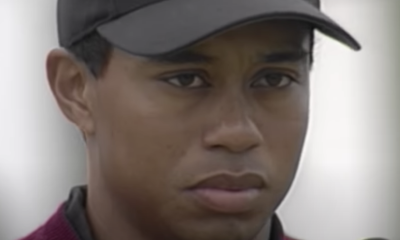
 19th Hole2 weeks ago
19th Hole2 weeks agoGary Player claims this is what ‘completely ruined’ Tiger Woods’ career
-
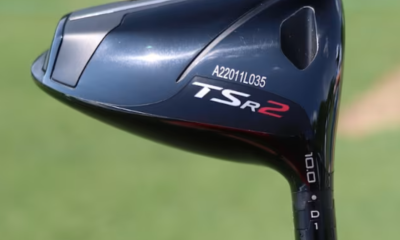
 Equipment5 days ago
Equipment5 days agoDetails on Justin Thomas’ driver switch at the Wells Fargo Championship
-
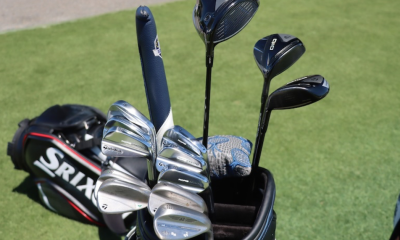
 Whats in the Bag2 weeks ago
Whats in the Bag2 weeks agoTeam McIlowry (Rory McIlroy, Shane Lowry) winning WITBs: 2024 Zurich Classic
-
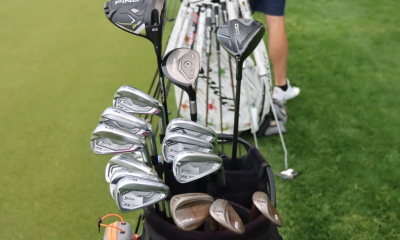
 Whats in the Bag6 days ago
Whats in the Bag6 days agoKeegan Bradley WITB 2024 (May)
-

 Equipment2 weeks ago
Equipment2 weeks agoGolf fans left surprised by LIV’s choice of course for its 2024 individual championship event
-
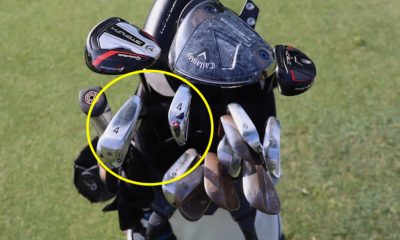
 Equipment2 weeks ago
Equipment2 weeks agoWhy Wesley Bryan is playing two 4-irons this week













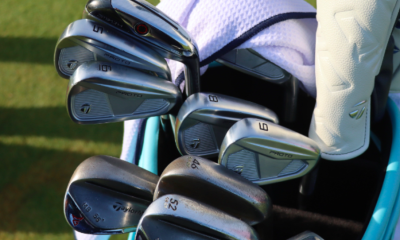

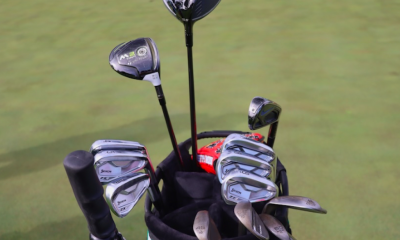

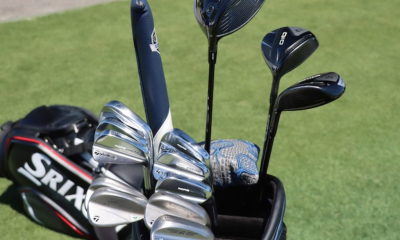

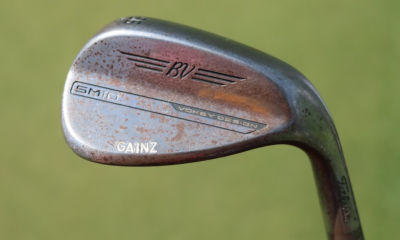

BIG STU
Sep 3, 2016 at 10:32 pm
Nothing new here AJ Bonnar has taught the ‘hammer” theory for years and basically Mo Norman had the same theory he said you need to put this guy (the club) on this guy here (the ball)
Todd Dugan
Sep 4, 2016 at 2:15 am
To be clear, my teaching style does not rest on a “hammer theory”. I am simply making an analogy. A “theory” is unproven. My approach is built on proven science.
Andrew Cooper
Sep 4, 2016 at 3:17 am
Of course it’s not new- the game has been played for over 500 years! Swing path, club face angle and centered contact has always been the basic task.
Mat
Sep 2, 2016 at 7:20 am
I’d take it a step further.
Because 99% of instruction is based on where the club head travels, and not what the club is designed to do, most people learn the whole “swing like the ball isn’t there” nonsense. It leads to players scooping, time and again. Same thing with slice/draw mechanics… understanding what a ball does midflight tells you how the ball exited on impact.
Next time you see someone struggling, tell them they have to smash the ball like starting a basketball dribble from the ground. You must smoosh the ball, not catapult/sling it. Magically, as the article says, Brain fixes Body.
The total instructional disconnect is that the ball tells you what you did at impact 100% of the time. BALL DON’T LIE. It was a revelation to see and understand tour-level impact in slow motion. Yes, biomechanics matter, but novice instruction is woefully inadequate in explaining ball and club at impact.
I sound like Bobby Clampett, don’t I… ¯\_(?)_/¯
Todd Dugan
Sep 2, 2016 at 2:16 pm
I would caution that the ball-flight can indeed “lie”, when the contact point is away from the “sweet spot”, especially for woods, due to the phenomenon known as “gear effect”. And while it is straight-forward to determine whether the face is open or closed for solid strikes, I find many will make errors in determining path. For example: solid strike…ball starts straight, then curves right. Few would correctly determine that path is left of target, in my experience.
Sumsum
Sep 2, 2016 at 4:17 am
How about this concept:
Some have it, some don’t. Some can, others can’t. As simple as that.
Mind blown.
Over and out
Mat
Sep 2, 2016 at 7:21 am
Categorically tripe.
Mm
Sep 2, 2016 at 12:24 pm
Because it’s real and you can’t handle it
Todd Dugan
Sep 2, 2016 at 2:28 pm
If by “it” and “can”, you are referring to the ability to strike the ball reasonably well with good consistency, then I would say that virtually everyone CAN. A high percentage do not. My passion is for changing that trend.
Philip
Sep 1, 2016 at 11:51 pm
Nice article, I use that metaphor all the time whenever I feel I’m playing golf swing and not golf – that golf is no harder to our body than hammering a nail. For any other action in life we just think and immediately allow our body to do it – ah, but not golf … superior species my a$$
—
Today was an eye opener. I was practicing my distance control with my putter and was so focused on the target and visualizing what I wanted the ball to do that I forgot to make sure my alignment was correct, that my stance was correct, that my ball position was correct (not that I’m a bit of a control nut) and after a streak of great putting I happened to look down at my stance and saw a setup up that I would never have imagined or any instructor would ever of suggested – but apparently my body prefers it. I decided at that point to only focus on the club face at impact and club path – to let my body figure out everything else and was finally able to ace the bunker, lob shots and delicate flops from tight lies (even little 5 foot long flops that landed ever so gently) instead of the shanks or tops I tended to get lately.
mr b
Sep 1, 2016 at 1:07 pm
wait wait wait. huh?
bogeypro
Sep 1, 2016 at 11:09 am
Sounds like a shrink wrote this article. I find that this is the problem with golf instruction… it is either too vague or too many details at one time. Too many instructors want to tear down the golf swing in one session. Ask the student what they want to accomplish and how detailed to they want the lesson to be. Some just want some type of repeatable ball flight while others may want to be the next Jason Day. Some people like details while others just want to feel what is right and will recreate it. Stop trying to make us all swing like the perfect model golfer -work on the basics (setup, grip, alignment). Then, fix any major swing flaws that may be preventing consistent contact at impact. There are, and have been in the past, many great golfers on tour that don’t have a perfect swing, but they get it right coming through impact.
Dennis Corley
Sep 1, 2016 at 12:33 pm
That’s pretty much what the article was saying: “impact, impact, impact” was how he summarized his approach.
ReadingComprehensionMuch?
Sep 1, 2016 at 4:01 pm
Ummm, did you read the article? That’s pretty much exactly what the point was.
Jim
Sep 6, 2016 at 11:34 pm
No good teacher trys to make everyone swing the same way, but find ways to get them to stop doing things that are screwing up their ability to make good impact more consistently. There are things that I refuse to accept from certain swings. I know I can show, and clearly get them to understand and even feel WHY it needs to change. If they can’t handle that or don’t want to try – then what’s the point of lessons? Honestly, I don’t want that person as a student. I’m too invested in what I do and my students are too.
If Furyk comes to me for a lesson and during his interview he says “I suck – I’ve never broken 100”, we’re ‘tearing’ that swing apart. Period. If he says “well, I won a bunch of tour events – and just shot a 58 – but I’m just not striking it right ast couple of weeks…..well, that’ll be interesting….